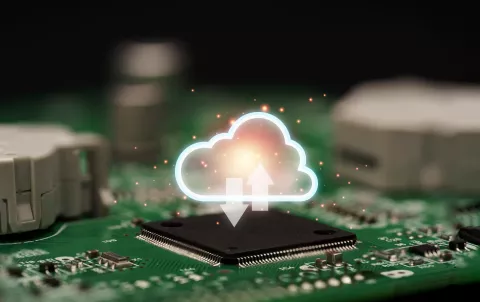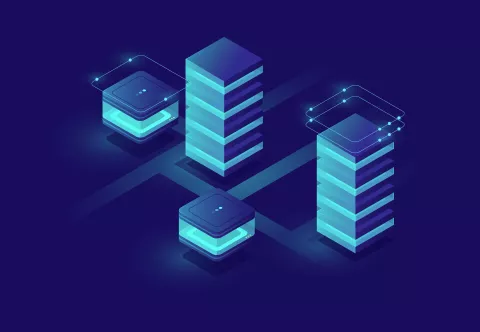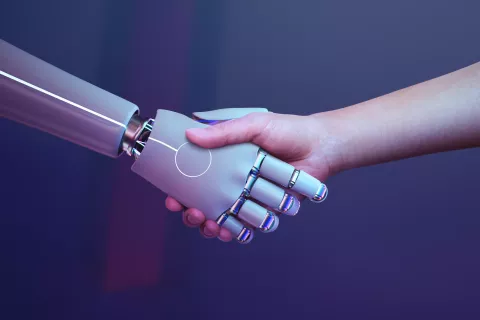Artificial Intelligence is no longer a futuristic add-on — it’s becoming the core engine of the next generation of SaaS platforms. From automation and personalization to predictive analytics and decision intelligence, AI is redefining how software is built, delivered, and experienced. In 2025, SaaS is no longer just about accessibility through the cloud — it’s about intelligence at scale. AI transforms static software into adaptive systems that learn, evolve, and deliver continuous value to both businesses and end users.

1. From Software as a Service to Software as a System That Thinks
Traditional SaaS solutions automate workflows and centralize data, but they often rely on human intervention for insights and decisions.
Next-gen SaaS, powered by AI, changes that paradigm by integrating machine learning models, natural language processing, and data intelligence directly into the platform.
This evolution turns SaaS tools into self-improving ecosystems — capable of analyzing patterns, anticipating user needs, and suggesting or even executing optimal actions.
In short, SaaS is evolving from what you tell it to do into what it knows you need.
2. Predictive Intelligence and Proactive Decision-Making
One of AI’s most powerful contributions to SaaS is its ability to predict.
Instead of reacting to data, AI-driven platforms forecast trends, risks, and opportunities.
- In CRM platforms, AI identifies which leads are most likely to convert.
- In HR software, it predicts attrition and recommends retention strategies.
- In fintech SaaS, it detects fraud in real time and optimizes risk scoring.
This predictive layer allows companies to make faster, data-backed decisions — transforming raw information into actionable foresight.
3. Hyper-Personalization at Scale
AI makes it possible for SaaS platforms to deliver personalized experiences for every user without manual configuration.
Through machine learning, systems analyze user behavior, preferences, and goals to dynamically tailor dashboards, workflows, and recommendations.
For instance:
- A project management SaaS can adapt its interface to highlight the most relevant tasks per user.
- A marketing platform can automatically adjust campaign templates based on audience performance.
- A learning management system can customize educational paths for each student’s progress.
This hyper-personalization increases adoption, engagement, and satisfaction — the ultimate metrics of SaaS success.
4. Automation Beyond Efficiency
Automation has always been a key value driver in SaaS, but AI takes it several steps further.
Instead of following pre-set rules, AI-based automation learns and adapts over time.
Think of:
- AI-driven chatbots offering human-level support 24/7.
- Intelligent workflows that prioritize tasks based on urgency and context.
- Autonomous reporting systems that surface anomalies or opportunities before humans even look.
This kind of intelligent automation frees teams from repetitive tasks and lets them focus on innovation, strategy, and growth.
5. AI-Powered Data Insights and Visualization
SaaS platforms generate enormous volumes of data — but value lies not in the data itself, rather in the insights extracted from it.
AI tools like natural language querying, automated data clustering, and real-time anomaly detection make it easier for users to uncover patterns without advanced analytical skills.
Modern BI SaaS platforms already use AI to:
- Translate complex datasets into plain-language summaries.
- Automatically highlight key performance shifts.
- Recommend next steps based on data trends.
In this sense, AI acts as an embedded data analyst, giving every user access to deep intelligence without needing a data science team.
6. Security and Compliance Reinvented
AI also strengthens one of SaaS’s most critical pillars — security.
Through behavioral analytics, AI can detect suspicious logins, prevent data breaches, and enforce compliance in real time.
Machine learning models continuously evolve to recognize new attack vectors, ensuring the system becomes smarter — and more secure — with every event it processes.
For businesses in regulated industries, this adaptive protection is no longer optional — it’s essential.
7. The Future: Autonomous SaaS
As AI capabilities continue to mature, the future points toward autonomous SaaS systems — platforms that self-manage, self-heal, and self-optimize.
Imagine a CRM that automatically restructures pipelines based on forecast accuracy, or a finance SaaS that adjusts reporting logic when regulations change.
These systems will minimize downtime, optimize performance automatically, and require minimal human oversight — a new era of intelligent, self-sustaining software.
In Conclusion
AI isn’t just enhancing SaaS — it’s redefining it.
By merging scalability with intelligence, next-generation SaaS platforms are becoming living systems: adaptive, predictive, and personalized.
For businesses, adopting AI-powered SaaS means unlocking exponential efficiency, deeper insights, and competitive advantage in an era where agility defines survival.
In the future of cloud software, success won’t be about who has the most features — but who has the smartest ones.


